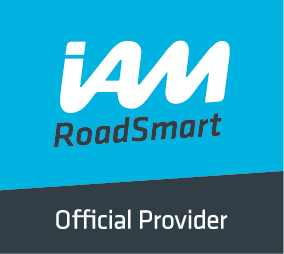Gone with the wind: Tips from IAM RoadSmart
With the constant change of weather it’s amazing that many of us are able to get from A to B. We would have hoped with a new year and all that Mother Nature might be kind to us but this isn’t the case. This week’s tips give advice on how to deal with driving and riding in the wind, from IAM RoadSmart’s head of driving and riding standards Richard Gladman.
- If you have to go riding in the wind choose a heavier bike. Heavy bikes with a low centre of gravity will be more stable. A fully faired touring bike will be greater affected by side winds than a smaller machine where often the greatest surface area is the rider
- Look out for those around you. Drivers should try and be aware of cyclists, horse-riders and pedestrians that can be easily impacted by the wind. If you are riding pick your position carefully so that sudden gusts of wind don’t blow you into oncoming traffic or the side of the road; a central position is often best. If you are leaning into a crosswind try and anticipate where it will end (often the shelter of a high-sided vehicle will affect your course) and where it is likely to start again; bridges and cuttings on major roads can provide momentary respite but you need to be ready for the gust as you emerge
- Keep the speed down to minimise the effect of high winds on your vehicle. The faster you drive or ride the more difficult it becomes to maintain control in cross winds and the further you are likely to stray off course. .Watch out for high-sided vehicles struggling to maintain control. Use the clues in the scenery ahead – are there trees, open areas, bridges? If yes then anticipate sudden gusts of wind that might force a lorry, bus or trailer to swerve suddenly
- Keep both hands on the wheel or handlebars ready to exert maximum grip if required. Make sure you take frequent breaks as it can be very tiring fighting the wind whether on two or four wheels
- Plan your journey. Check the weather forecast and try to check traffic updates regularly before you set off. If bridges are closed to high-sided vehicles then take extra care even alter your route to avoid the worst areas
Richard said: “The only thing that is predictable about the British weather is its unpredictability! Slowing it down and looking ahead will serve you well as you try to negotiate your way safely through the short winter days. If the conditions are extreme do you need to travel, certainly on a motorcycle the wind will definitely spoil the day.”
Notes to editors:
- Richard Gladman is IAM RoadSmart’s head of driving and riding standards.
- IAM RoadSmart has a mission to make better drivers and riders in order to improve road safety, inspire confidence and make driving and riding enjoyable. It does this through a range of courses for all road users, from online assessments through to the advanced driving and riding tests. IAM RoadSmart is the trading name of all businesses operated by the UK’s largest road safety charity, the Institute of Advanced Motorists (IAM) and was formed in April 2016 combining the IAM, IAM Drive & Survive, PDS and IAM Driver Retraining Academy. The organisation has 92,000 members and campaigns on road safety on their behalf. At any one time there are over 7,000 drivers and riders actively engaged with IAM RoadSmart’s courses, from members of the public to company drivers, while our Driver Retraining Academy has helped 2,500 drivers to shorten their bans through education and support programmes.
To find out more about IAM RoadSmart products and services visit the new website www.iamroadsmart.com
To find out the name of your own local IAM RoadSmart group please visit: https://wwwiamroadsmart.com/local-groups
Media contacts:
Further information from:
IAM RoadSmart press office – 020 8996 9777
press.office@iam.org.uk / www.iamroadsmart.com
ISDN broadcast lines available
Follow us:
On Facebook: www.facebook.com/IAMRoadSmart
On Twitter: @IAMRoadSmart
